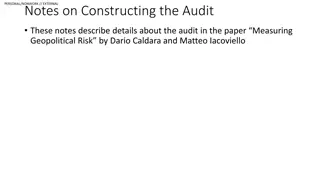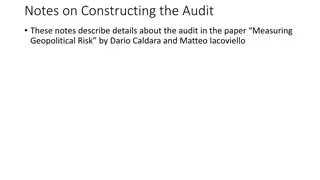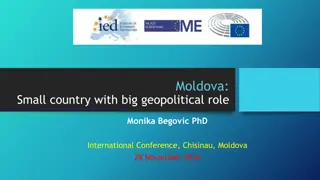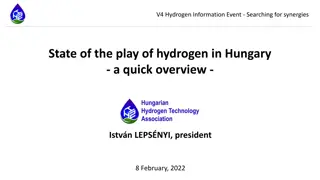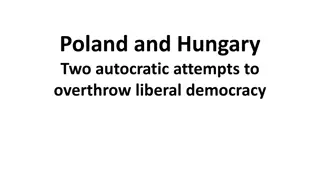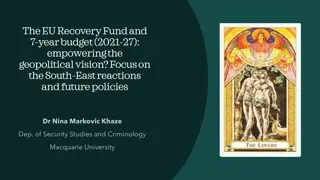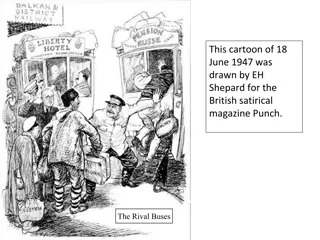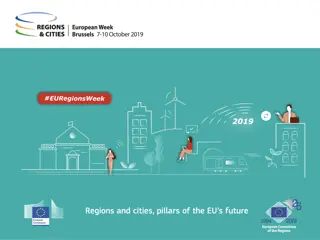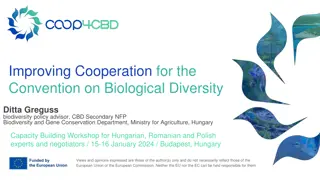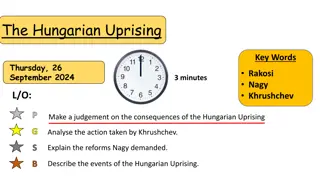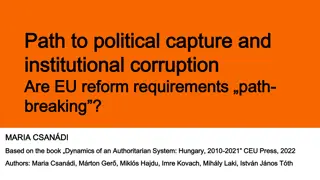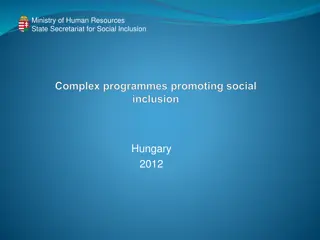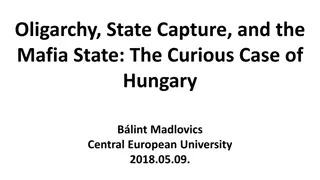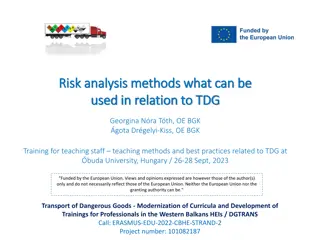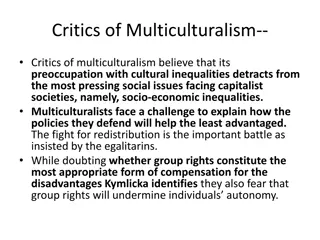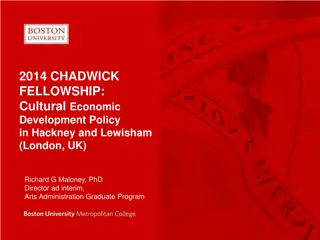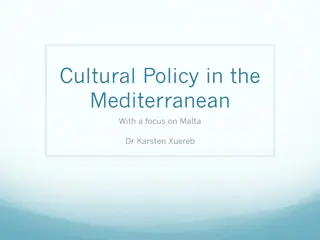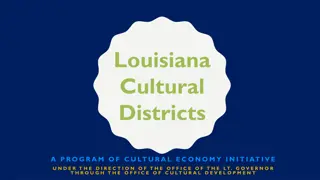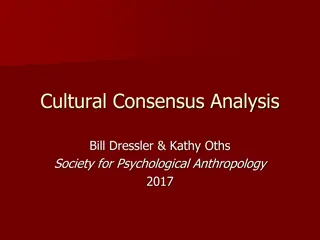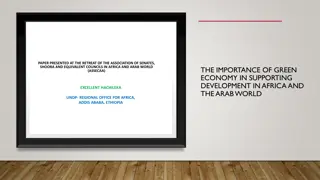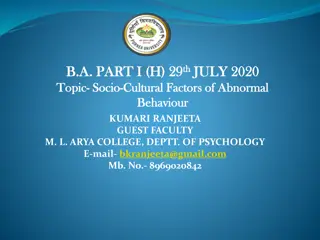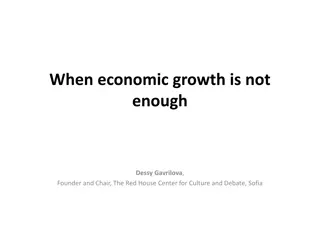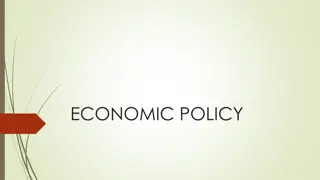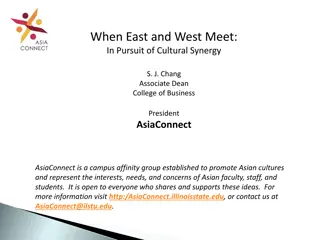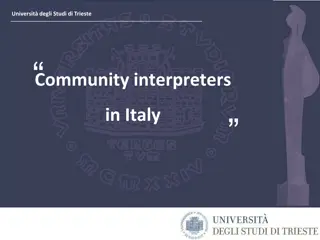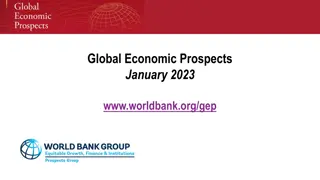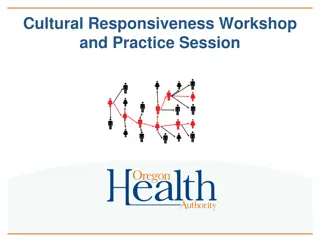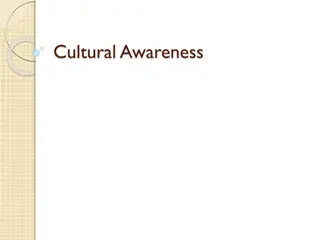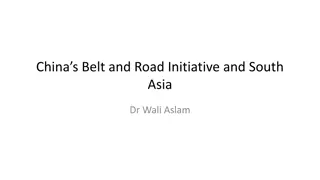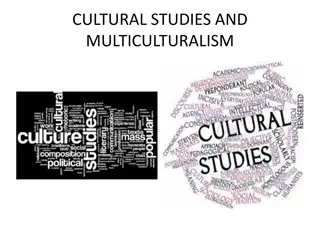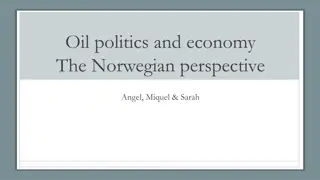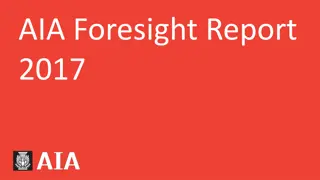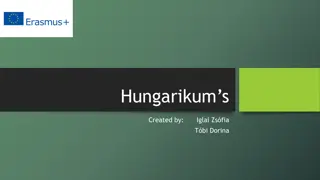Overview of Hungary: Geopolitical, Economic, and Cultural Insights
Hungary, nestled in Central Europe, boasts rich cultural heritage, a robust economy with steady GDP growth, and diverse natural resources. With a strategic geopolitical location and membership in international organizations, Hungary plays a significant role in regional initiatives. Explore Hungary's history, economy, natural resources, and geopolitical significance for a comprehensive understanding of this dynamic country.
Download Presentation

Please find below an Image/Link to download the presentation.
The content on the website is provided AS IS for your information and personal use only. It may not be sold, licensed, or shared on other websites without obtaining consent from the author. Download presentation by click this link. If you encounter any issues during the download, it is possible that the publisher has removed the file from their server.
E N D
Presentation Transcript
General Presentation of Hungary Gergely Schucht r Consul Embassy of Hungary
Structure I. Geopolitical position of the country II. History of Hungary III.Culture of Hungary IV.Practical advices for the travel 2
Geopolitical position Area: 93.030 km2 Population: 9,9 m (2014 e.) Additional 4,5 m outside Central and Eastern Europe 7 neighbors Climate: continental Budapest: 1.8 m No sea, no high mountains (highest peak: 1014 m asl) 3
Economy 2014. IV.Q. GDP growth 3,4% (EU average: 1,3%) 2014. III.Q. Export growth 7,9% / Import by 11% 2014 SUM Ex: 84,5 billion EUR / Im: 78,0 billion EUR (6,5 billion EUR surplus) Volume of industrial production in 2014 7,6% higher than in 2013 Car industry Alimentary Beverage Tobacco Growing investments in private sector 11,8% (2014. IIIQ) Construction industry lower 2,2% (2014. dec.) Unemployment rate 7,7% (2014 Y.) Average wages (850 EUR) Public Debt (end of 2014): GDP 77,3% Government (spending) financing needs (in 2014): GDP 2,2% GDP/C. (PPP): 21.239 USD GDP/C (nom.): 14.703 USD(IMF) GDP: 96.968 billion (2012/EU) 4
Natural resources Not much bauxite, coal, natural gas, arable land fertile soils 47.24% of total land (GMO free land / protected since 2006 and by constitution XX. Art.) Rivers: Danube and Tisza (international waterways) Danube river from Germany to Black Sea EU s longest 2860 km Tisza river from the Ukraine to Black Sea: 965 km Lake Balaton Thermal water 5
Natural resources in need The primary energy demand in 2010 is based on: Gas: 40.6% Oil: 32.1% Nuclear: 15.2% Coal: 10.5% 53% of overall energy from abroad 78% of natural gas imported Out of this 80% from Russia through the Ukraine 82% of crude oil from Russia through the Ukraine Nuclear energy: Paks 1982 CCCP (40% of overall electricity) 4R (2034) + 2 6
Geopolitical location Landlocked Strategic location in terms of land routes 7
Geopolitics II. Many IO s (OECD, OSCE, UNsys, CoE, etc.) NATO (1999) EU (2004) Regional initiatives: Visegrad Group (V4) since 1991 V4+ (An honest desire to intensify mutual cooperation and friendship among the four Central European states) CEI since 1989 (18 MS) 8
History of Hungary 896: Honfoglal s 1000: Foundation of the state by the King Stephen 1241-42: Invasion of the Tatars/Mongols 9
History of Hungary II 1458-1490: King Mathias Corvinus (Kralj Matja ) 1541: Turkish invasion (Country split into three parts) 10
History of Hungary III XVII, XVIII: Fights for independence (Habsburg, Turkish) 1848: Hungarian revolution 1867: Dual monarchy of Austria-Hungary 1914-1918: WW I 11
History of Hungary IV Treaty of Trianon (1920) WW II (Holocaust) 12
History of Hungary V 1945-1989 Soviet invasion, communist dictatorship 1956: Revolution 13
Government and Politics Hungary is a parliamentary representative democratic republic Democratic election since 1990. National assembly (unicameral). Head of State: J nos der Head of Government: Viktor Orb n 14
Challenges Sustainable economic development Aging population Economic migration to W-EU (doctors, scientists, researchers, artists, etc.) Brain Drain to USA still strong Our region is still not competitive enough Too export sensitive economy Market diversification Too dependent on out of EU energy sources (No Energy Union, No single energy market YET) Geopolitical instability diverging interests 15
Priorities (Geo.) Neighbors (i.e. Slovenia) Focus to achieve excellent relations (accept) No more 0 Sum Game Win-Win SME (Core of our growing economies, 500 Km) Support of HU minorities abroad Regional policy Common interests and goals (CSEE) / V4, CEI Coordination of policies to be represented in IOs. Euro-Atlantic orientation National interests represented in EU and NATO Strong and united Europe (economic crisis management, prevalence of community- based method of decision making) Strengthening of transatlantic cooperation Global opening Reopen towards the forgotten part of the world Increased role in shaping the global agenda in order to meet better global challenges. 16
Priorities (Sectors) Security policy International terrorism International cyber terrorism Transnational organized crime Illegal migration related threats Energy Security Natural gas / oil supplies for growing economies Renewable energy resources and technologies Promotion of collective rights of national minorities Language, culture, education, wellbeing at home Agriculture / food safety / sustainable development / respecting cultural diversity 17
HU FP and Diplomacy Public service Strengthen security in an international context Enhance international visibility of the community (as country and nation) Secure external resources for well-being Broaden opportunities for external education and cultural contacts Last but not least Ensuring access to consular protection for citizens 100 missions with over 1800 foreign service officers 18
Culture of Hungary Music: Ferenc Liszt, B la Bart k, Zolt n Kod ly Sciences: Nobel laureates Albert Szent-Gy rgyi (C-vitamin). Sport: Summer olympics success, main sports: Football, handball, water polo, fencing, handball. Spa culture 19
Visit of Hungary Places: Budapest 20
Visit of Hungary Places: Puszta, Lake Balaton, other cities Castles: http://hu.wikipedia.org/wiki/Magyarorsz%C3%A1gi_v%C 3%A1rak_list%C3%A1ja http://visit-hungary.com/things-to-do/top-15-castles 21
Visit of Hungary Coin of Hungary: Forint ( 1 =300 HUF) Must taste: Wine (Tokaj, Eger, Szeksz rd, Balaton), Guly s leves (Goulash soup), Soml i http://en.wikipedia.org/wiki/Hungarian_cuisine 22


